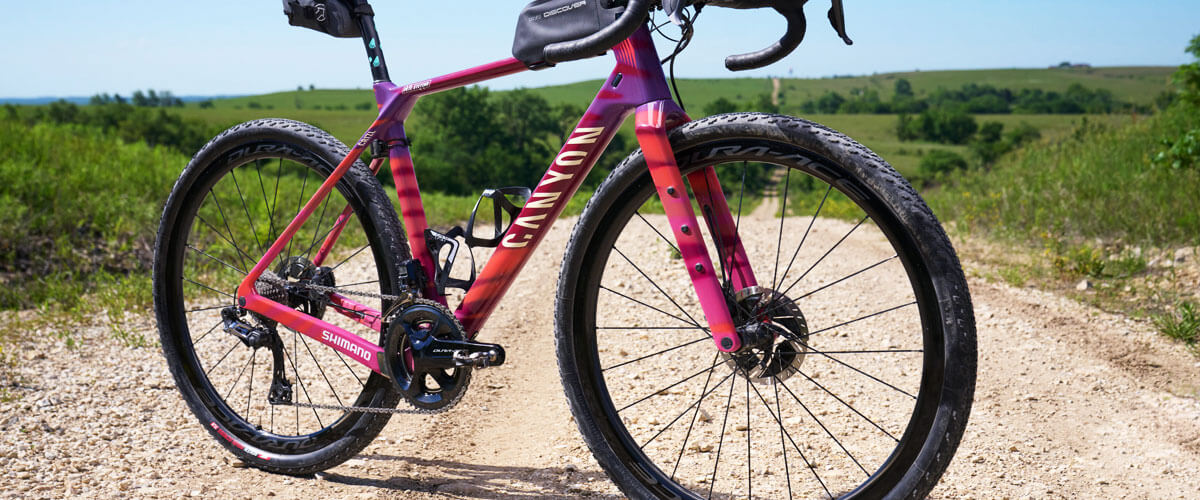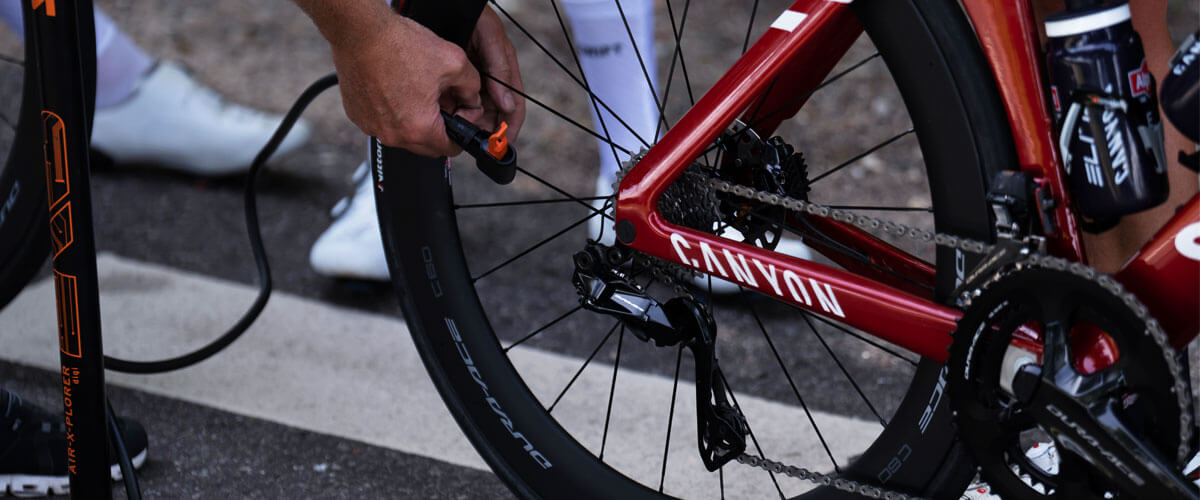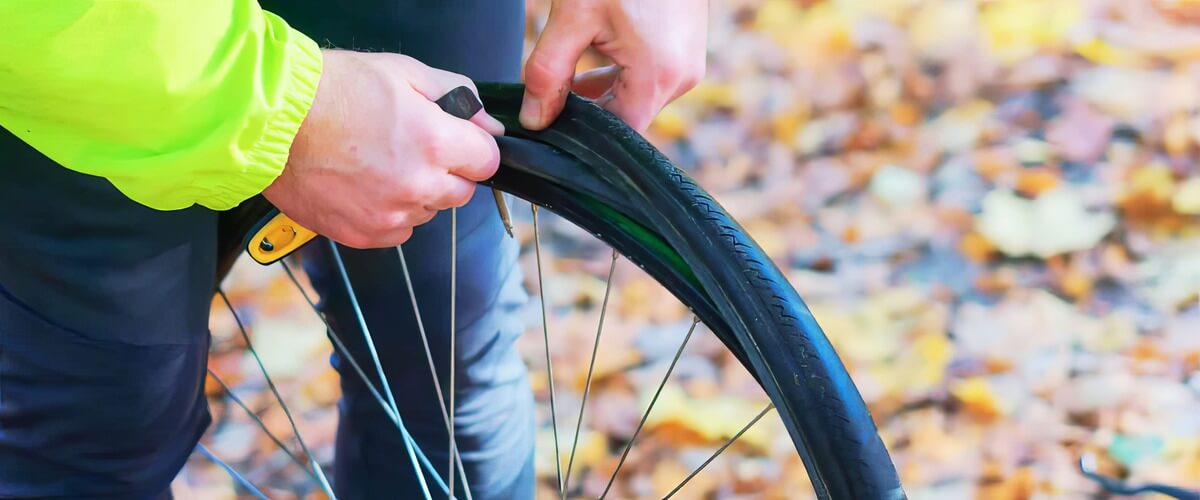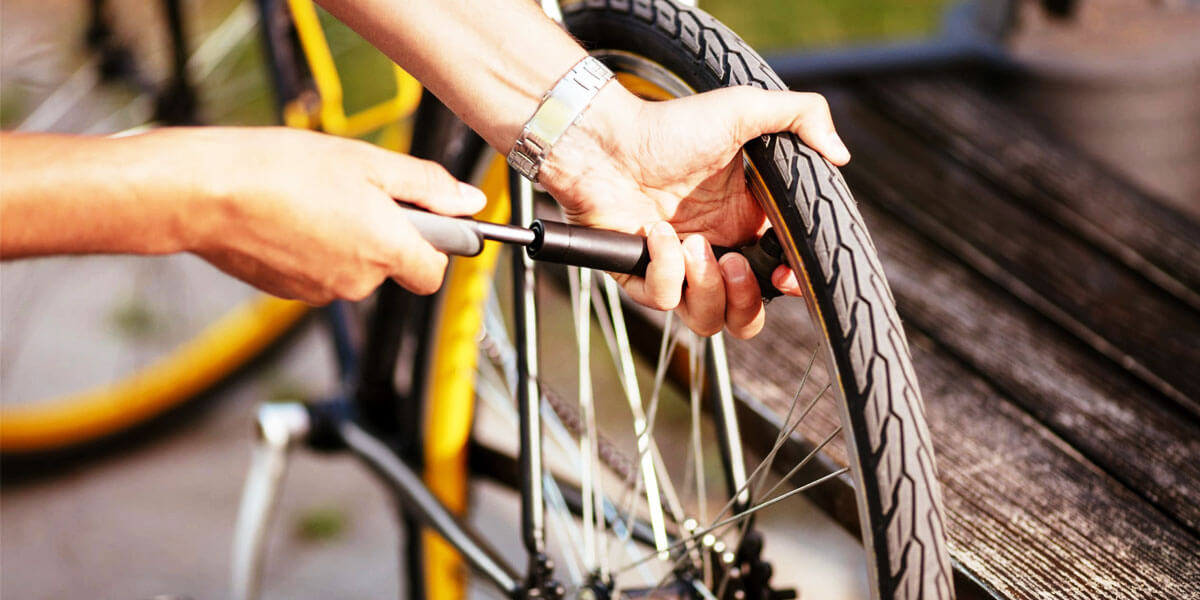There’s nothing more annoying than suddenly discovering that your bike tires are flat before a planned ride, even though you’ve done your due diligence and checked the treads the day before. This begs the question – why do my bike tires keep going flat?
Well, the average bike tire should stay inflated for a week to ten days, but they can’t hold air indefinitely, and over time, bike wheels naturally deflate. However, there are a number of other nuances. Understanding these processes will help you control and adjust the amount of air in the tube to ensure that your ride remains comfortable and safe at all times.
Natural air loss

Rubber bicycle tires have a complex chemical composition, consisting of polymeric materials and other components in the form of dyes, vulcanizers, plasticizers, stabilizers, etc., which directly affect their strength and properties. However, the structure of rubber fibers is such that they have micro capacities that allow air masses to seep out naturally, i.e., there is a physical process – the movement of air molecules from an area of high concentration to an area of lower concentration. In this way, the air will gradually move out of the tire.
However, some factors can significantly affect the rate of deflation and pressure loss:
- Material. Tires with higher-quality rubber compounds tend to have lower penetration rates.
- Temperature. High and low ambient temperatures are directly related to pressure fluctuations within the tire and have a significant effect on the diffusion process of air molecules.
- Gas. Not all gasses have the same number of molecules. Oxygen, for example, has a higher density than nitrogen or helium, so it has less permeability through the rubber structure than other gasses with lower densities.
- Time. As rubber materials wear and deteriorate over the years, they become less airtight, and air loss is inevitable.
External causes of air loss

Punctures
The most common external cause of tire deflation is a wheel puncture. Sharp objects such as glass, spikes, nails, and even small stones on the road can puncture the tread or sidewall of the tire, causing rapid air loss in the tube and requiring immediate repair or replacement.
Valve issues
Air leaks can also occur through a damaged valve or valve core, so it is a good idea to regularly inspect the valve stems and retighten or replace the core if necessary. Any damage or even dirt on this small part can cause significant air loss in a bike tire.
Temperature fluctuations
Temperature changes are directly related to pressure changes inside the tire, which are also subject to the laws of physics. In cold weather, the air inside the tire is compressed, and the pressure decreases; in hot weather, on the other hand, the expansion of the air causes the pressure to increase. It is important to take this into account because overinflated tires reduce the grip on the road surface, and the ride becomes more rigid and unsafe.
Impact or damage
Collisions with obstacles on the trail, potholes, and curbs in the rider’s path can also cause structural changes in the tire, bending of the rim, and uneven tire seating, resulting in air leaks or punctures. Always inspect the tire for visible damage after extreme riding or riding over rough terrain. Inspect the tread, sidewalls, and beads for cuts, cracks, bulges, or other irregularities.
Spin the wheel and run your hands over the tire’s surface if you feel bulges and indentations – this could indicate internal structural damage. Better yet, remove the tire and inspect the inner tube for punctures, cuts, and pinch points, and, if possible, make the necessary repairs to repair the damage or replace the tire.
Tire aging and degradation

Effects of long-term wear and exposure
Over time, as tires are used, the tread thickness gradually wears away, the rubber hardens, and effective traction is reduced, which is especially dangerous on wet and slippery roads. The rubber composition that makes up tires contains oils that degrade over time, reducing wheel performance characteristics such as flexibility and elasticity.
Recognizing signs of tire deterioration
Inspect the tread and sidewalls regularly for cracks, bulges, and abrasions. If you frequently inflate your tires because of a constant air leak and you feel vibrations and imbalance while riding, this is an indication that the tire is aging and may soon fail.
FAQ
Do all bike tires lose air?
Why is my tire losing air but no hole?
- Valve problems. Inspect the valve core and stem for damage, tighten the valve core if necessary, or replace the valve completely.
- Bead sealing problems. Tire beads that do not seal tightly to the rim or are pinched also cause slow air loss. Check that the tire is properly seated on the rim and that there are no foreign objects or debris interfering with the bead seal.
- Damaged rim tape. An improperly installed or damaged rim tape can puncture the tube through spoke holes or rim edges.
- Tire aging. Over time, the tread rubber deteriorates and develops multiple cracks and dry rot, weakening the tire structure and increasing the risk of air loss.
Despite all of the above, sometimes slow leaks may not be noticeable at all. You can detect them by immersing an inflated tire in water and looking for bubbles that indicate the location of the leak.
Is it normal for bike tubeless tires to lose air?
Some gradual tire deflation is acceptable and normal and will not result in a significant loss of wheel pressure during a single ride. However, if you notice an unusually rapid and significant loss of air in your tubeless tires, it could indicate more serious damage. It is important to address the problem as soon as possible to keep your tire in good condition and safe to use.



